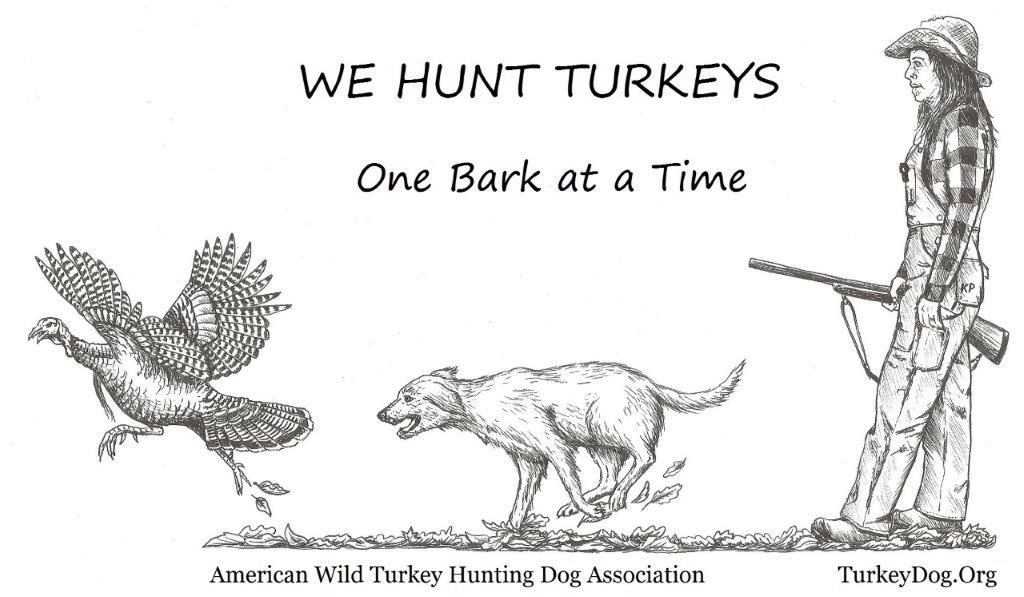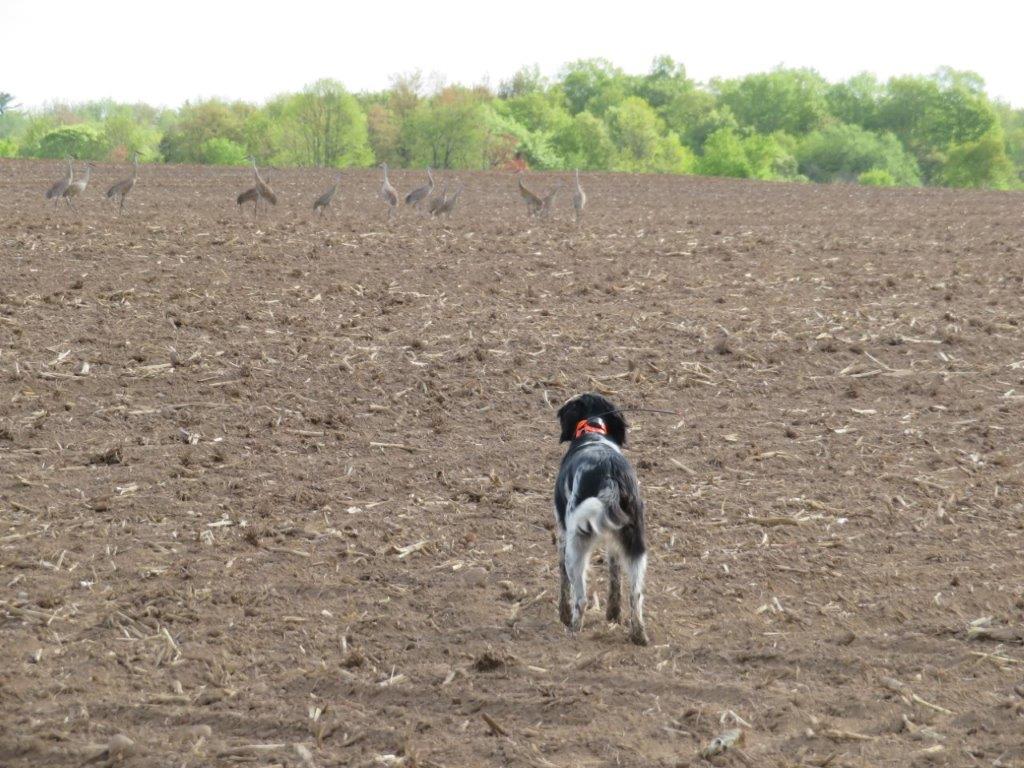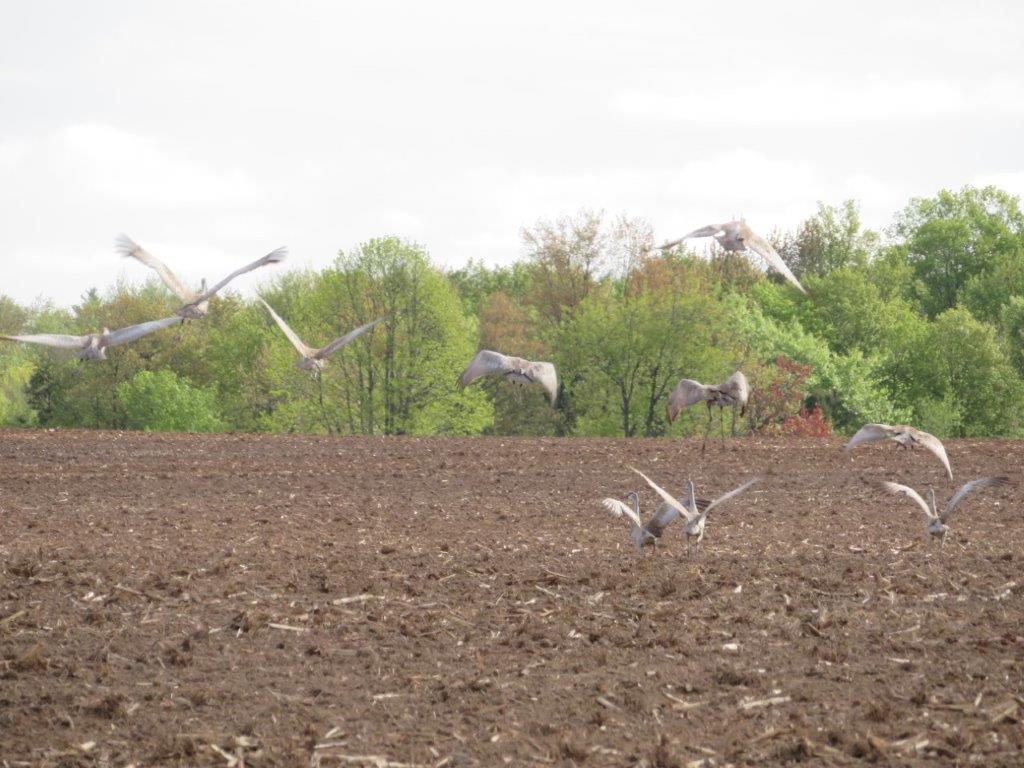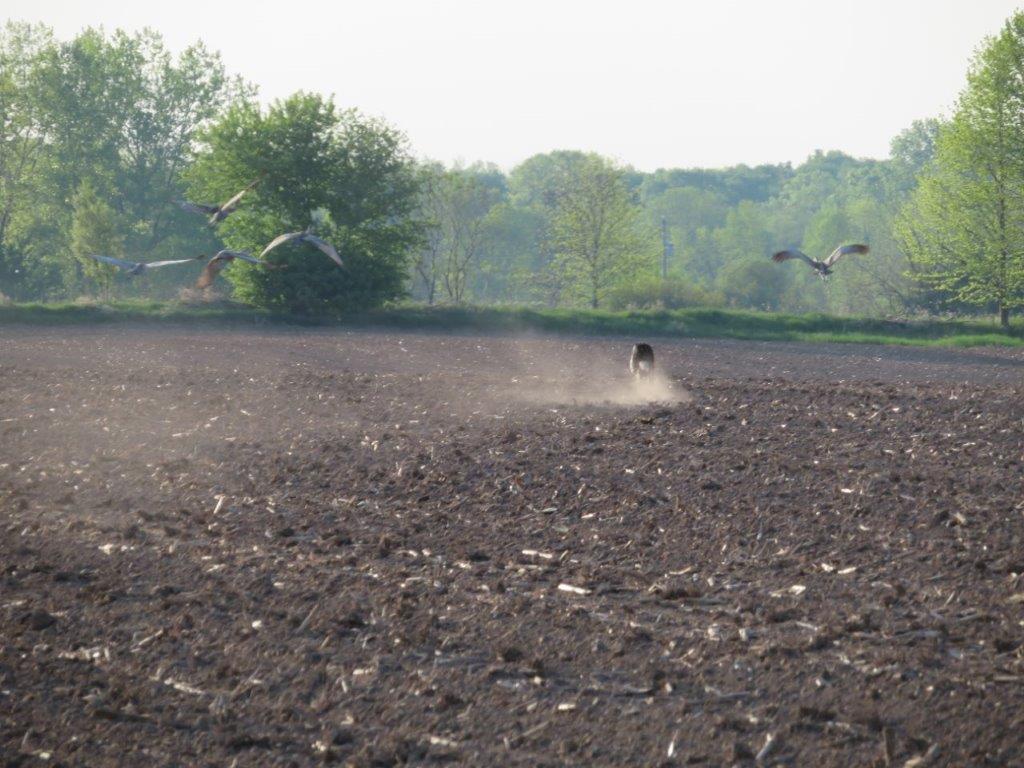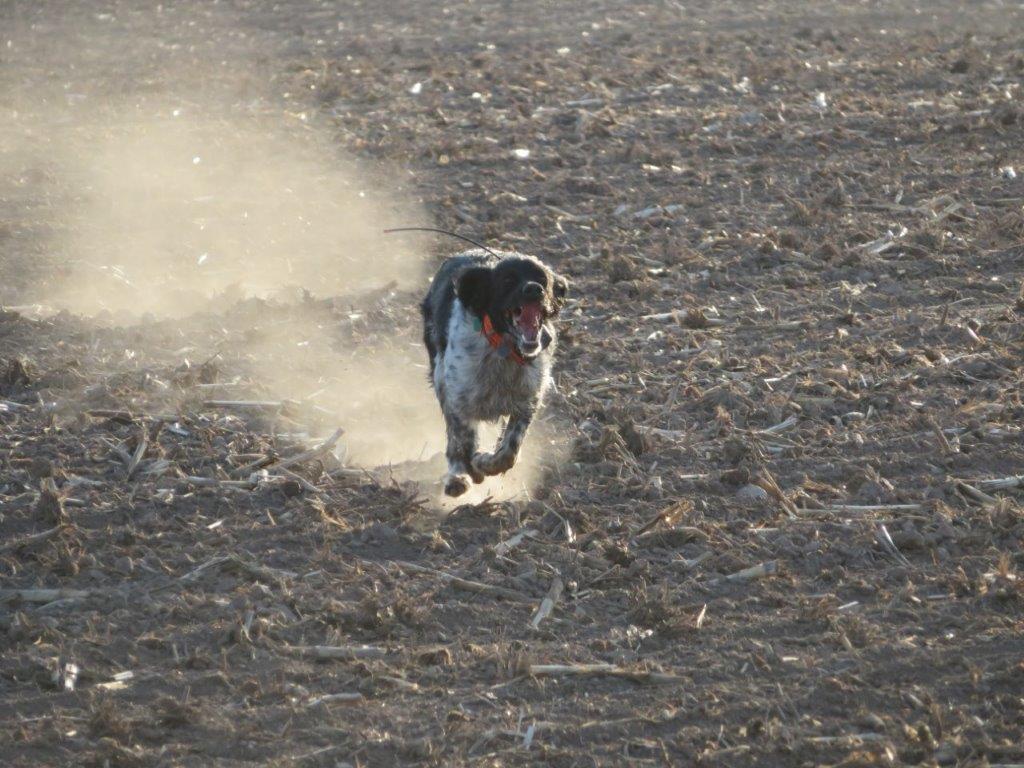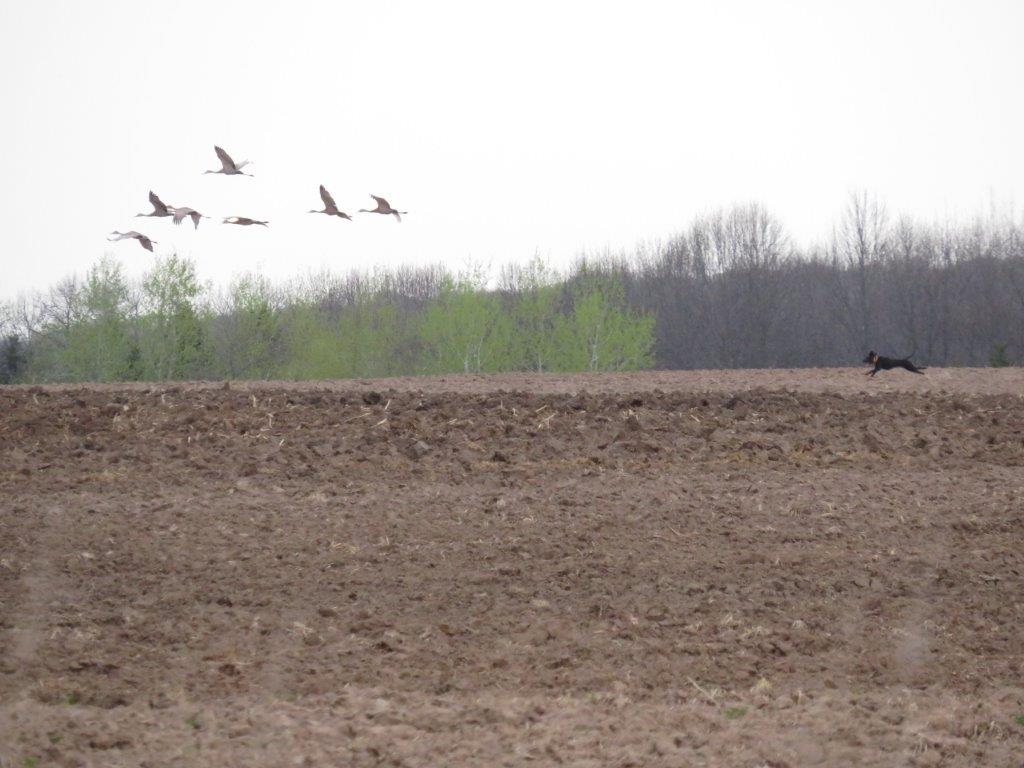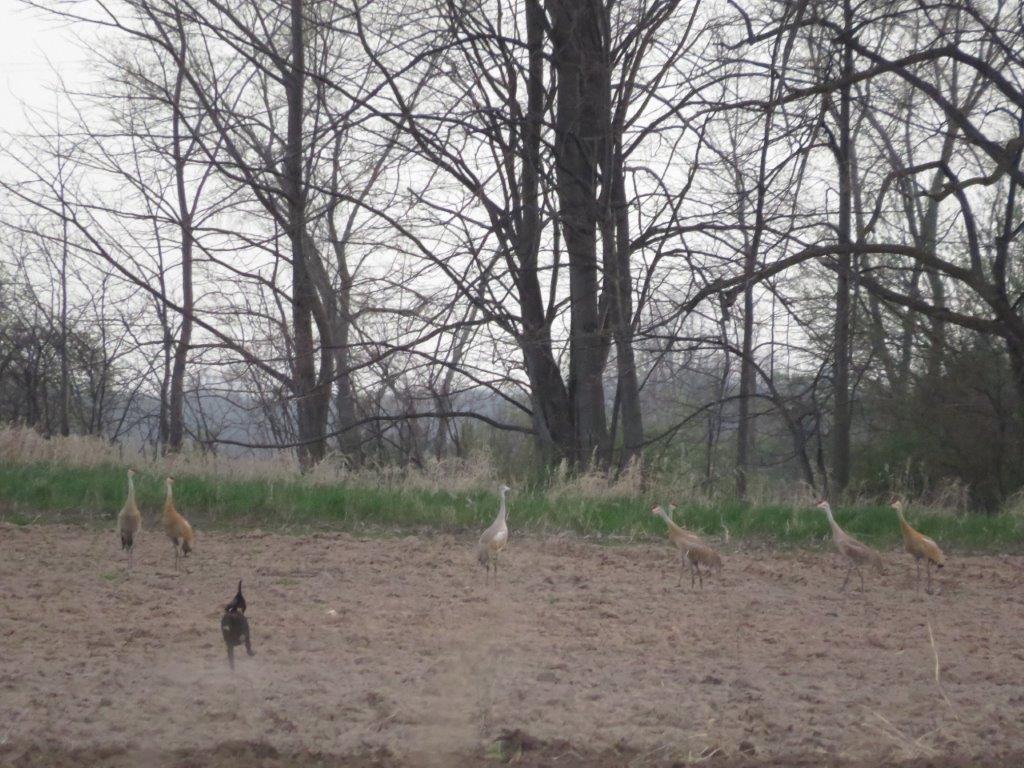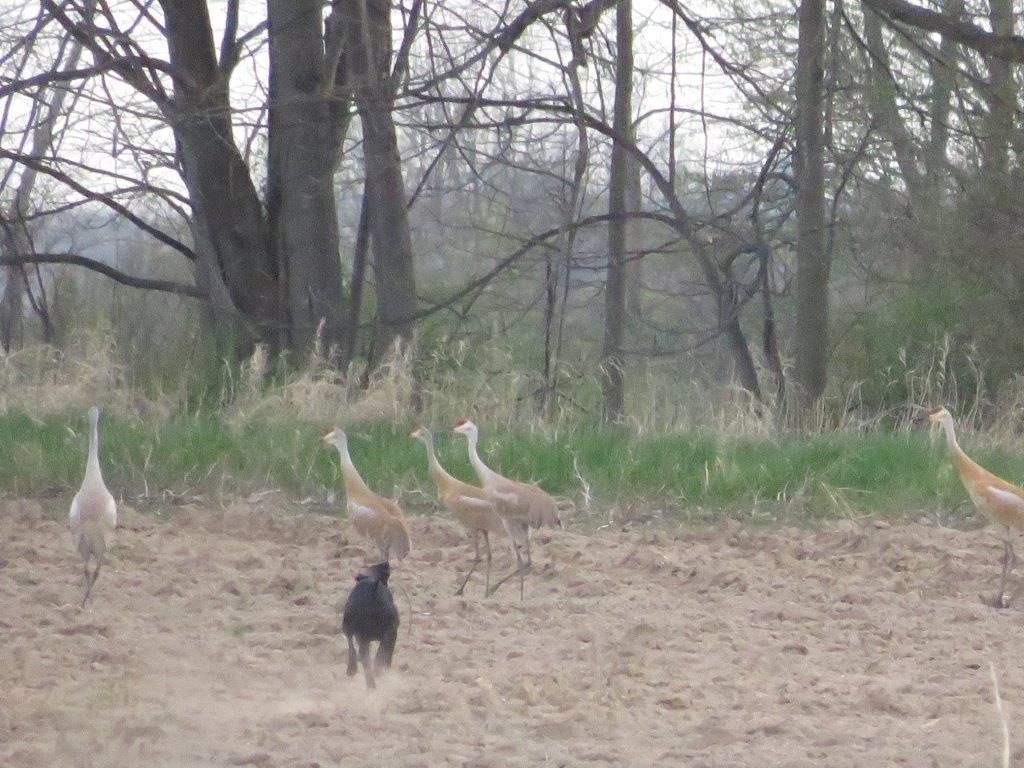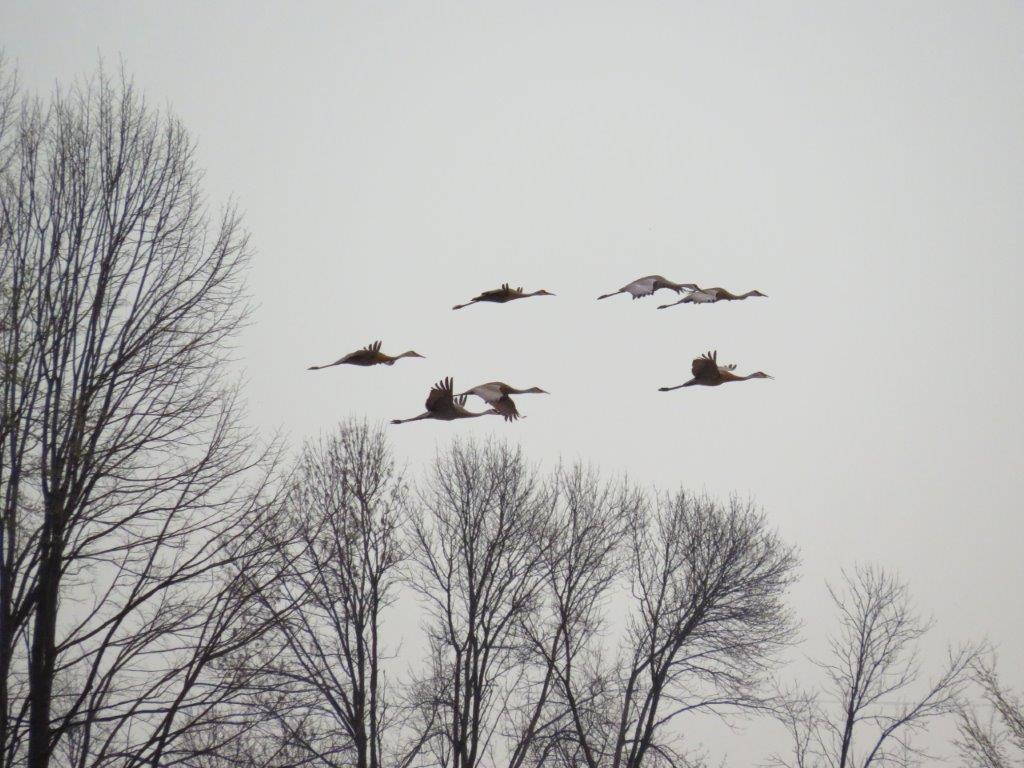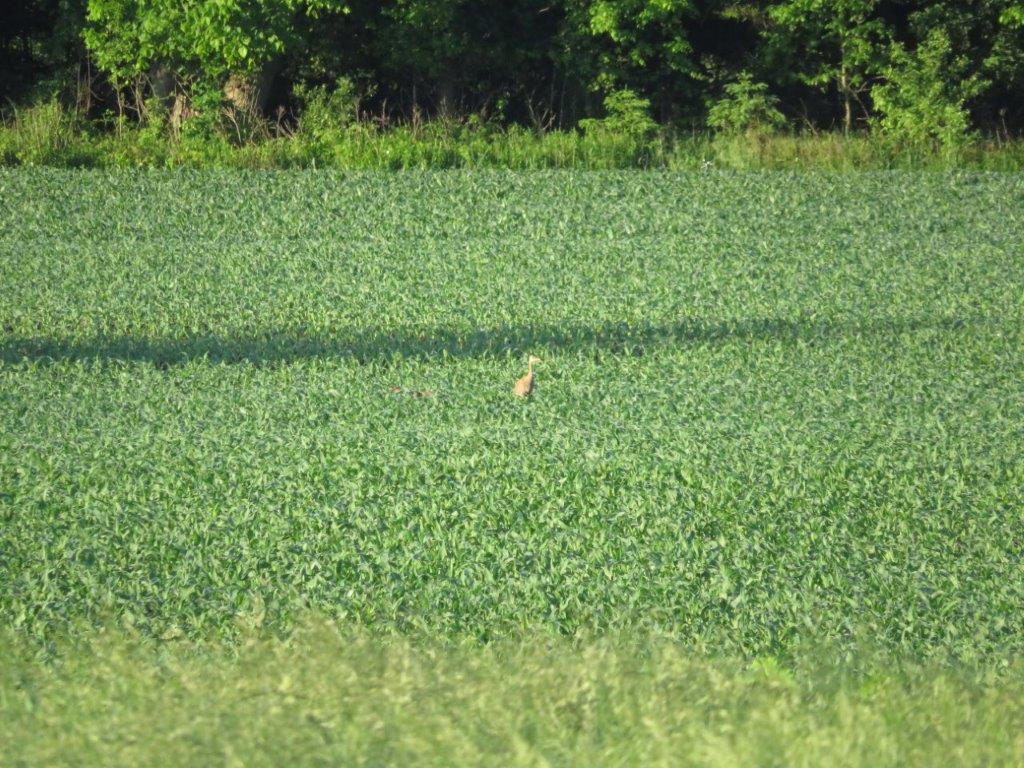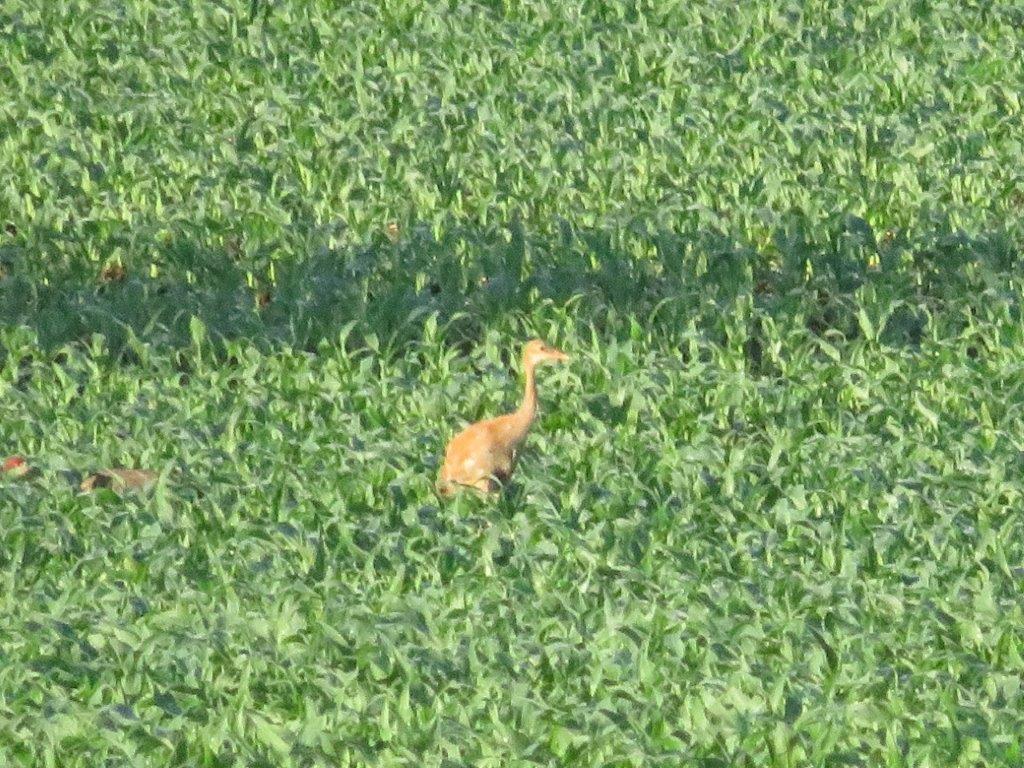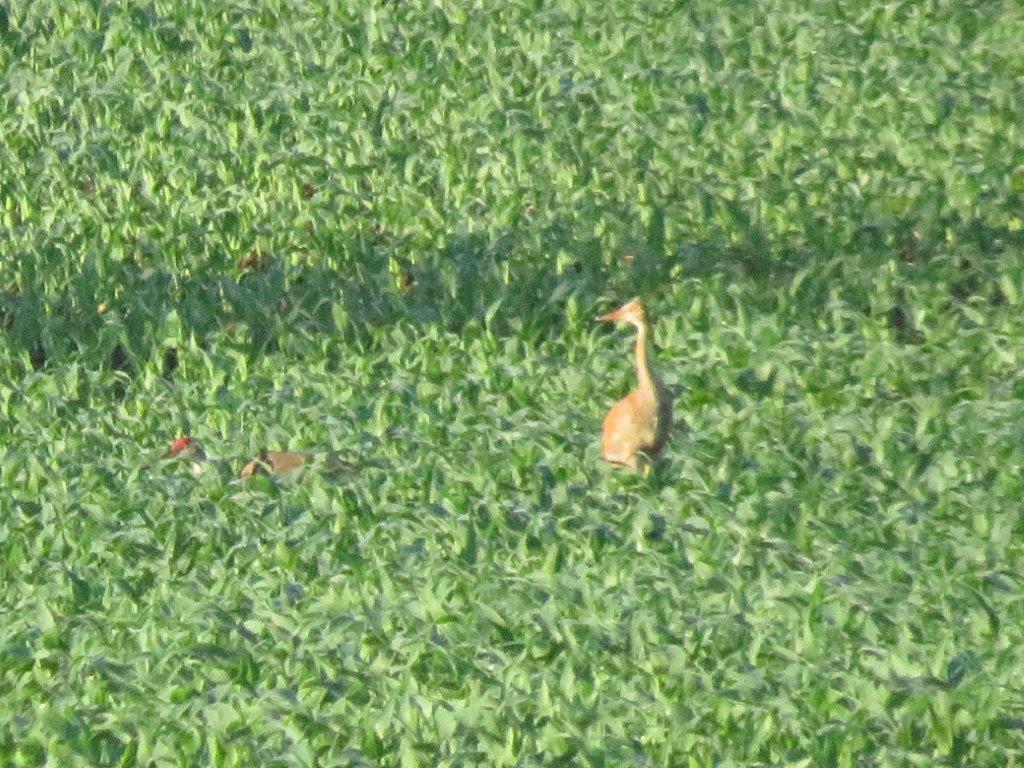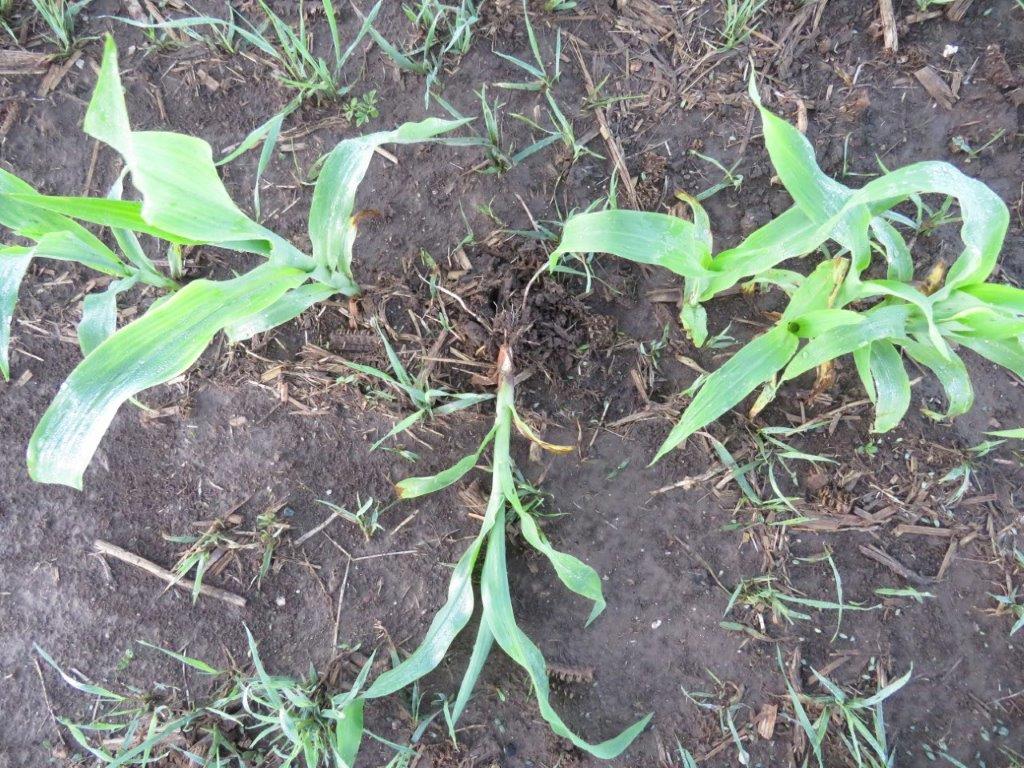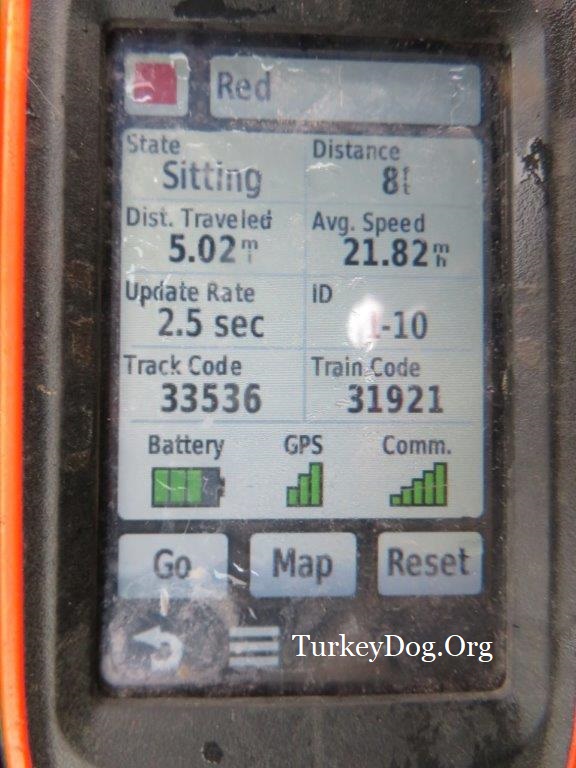 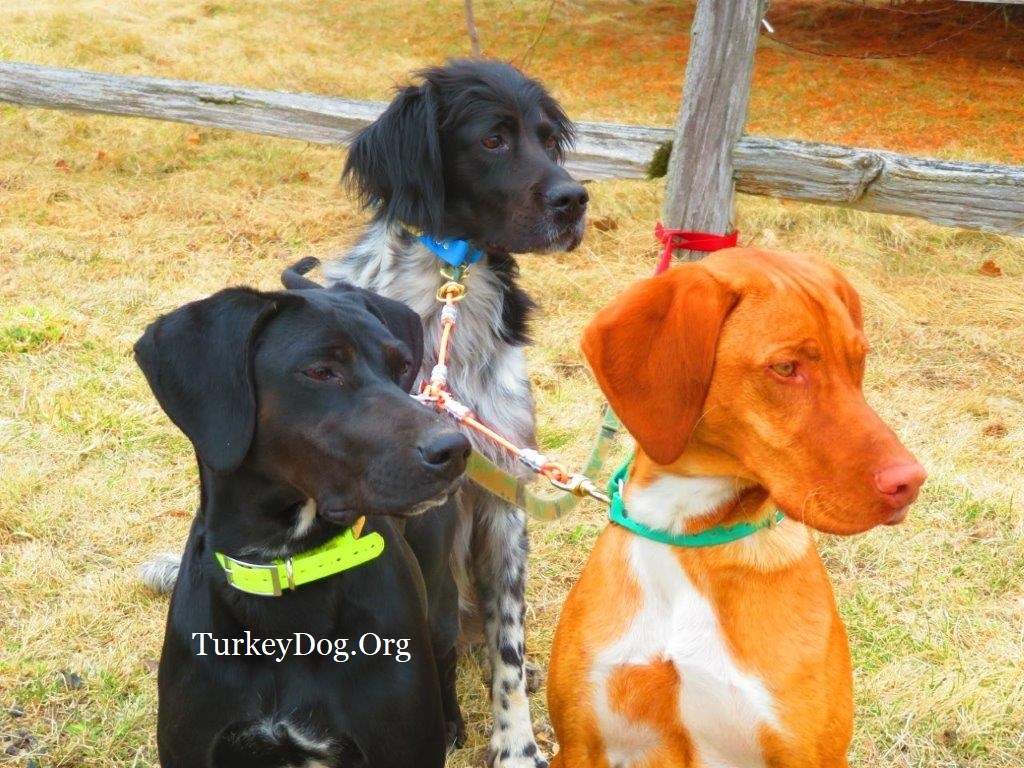 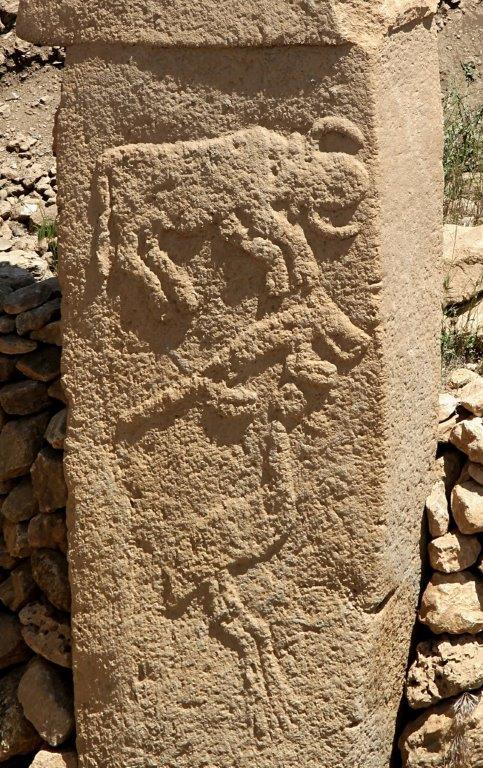 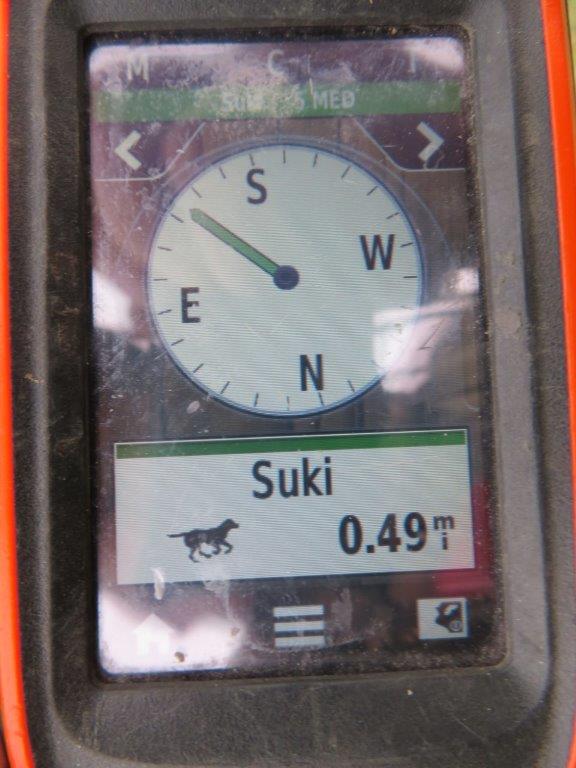 11,000 years ago, neolithic
people using stone tools, 11,000 years ago, neolithic
people using stone tools,built a monument with 50 ton stones (the world's oldest known megalith), on which they carved an aurochs, a dog and a crane.→ Today there's some dogs that hunt large birds: turkeys, canada geese, seagulls and cranes. |
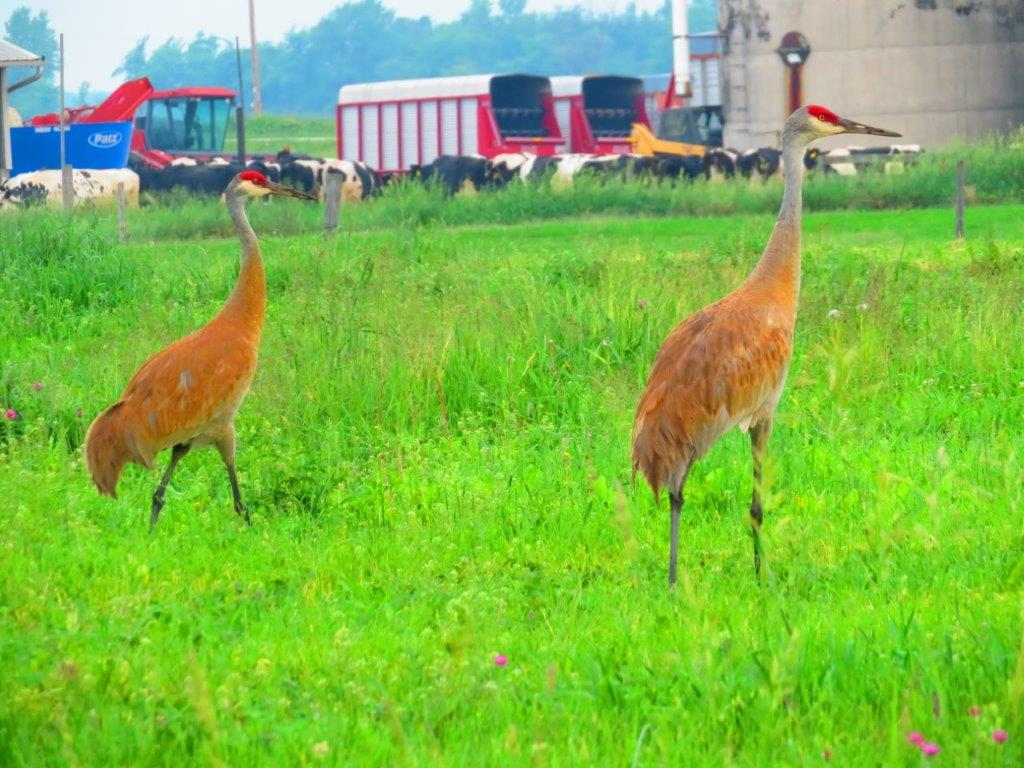 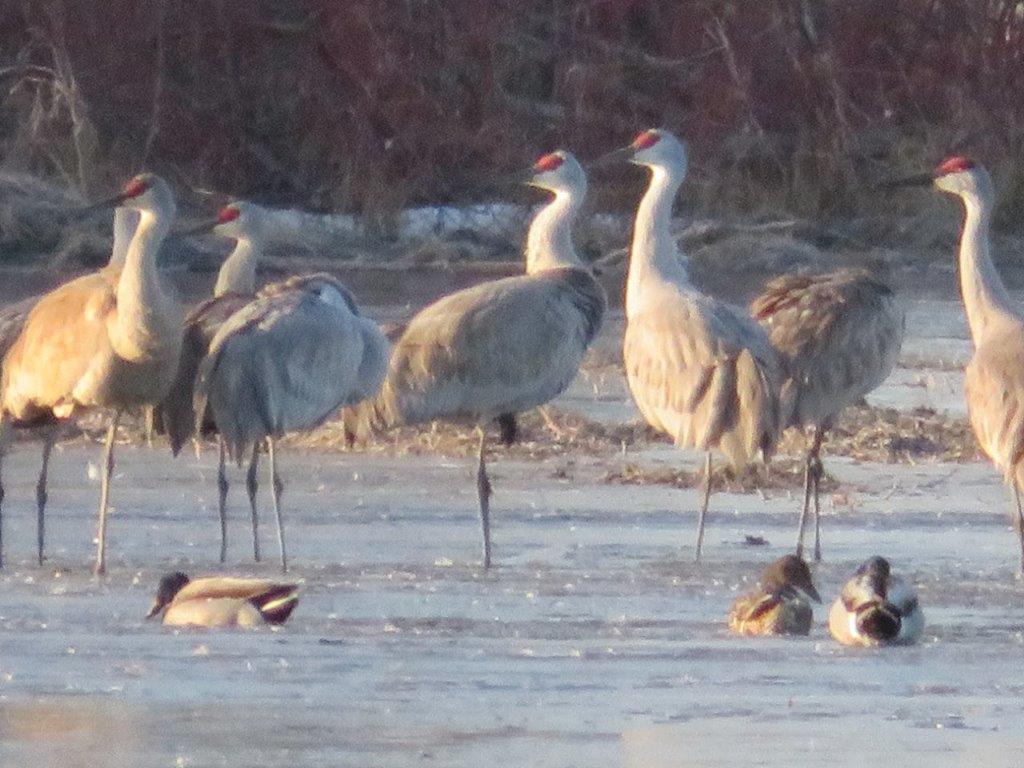 Farmers
can use our help to deter nuisance sandhill cranes
primarily, but also resident Canada geese from predating on their
corn, snap bean and alfalfa fields. Our bold, high-energy turkey dogs
are ideal
for the job. Farmers
can use our help to deter nuisance sandhill cranes
primarily, but also resident Canada geese from predating on their
corn, snap bean and alfalfa fields. Our bold, high-energy turkey dogs
are ideal
for the job. Of all the upland bird dogs, only owners of turkey hunting dogs will permit them to flush cranes and geese in the spring. While there are other upland bird dogs that run big (think field-trial pointers and setters accompanied by hunters on horseback), none of those dogs are trained (or permitted) to flush birds at great distances (they're trained to stand rock-still and point birds). And the hunters are not on horseback, they walk! Our puppies begin by chasing every fly in the window, to moths, butterflies and anything else that flies, up to the big game of all birds, the wild turkey. Their fascination with the big birds easily extends to cranes and geese. Flushing them in the off season polishes their skills for finding and scattering turkeys in the fall. There's nothing more fun for a bird dog than wild turkeys, and then there's geese and cranes. Other than chasing them away by themselves, the farmer's alternative is Avipel® (for corn or rice only, there is no chemical remedy for predation on beans, alfalfa or anything else) at $14/acre (2020 Wis. price). These special dogs save farmers the expense. The cool spring weather is ideal for the exercise. In Wisconsin, I started the third week of March, a good month before cranes nest, until the first week of June, when the corn is high enough that the kernel was disintegrated. We do this to protect the corn during approximately the first 8 days after it emerges, the only time it is vulnerable to predation from cranes. After that, cranes in corn fields are only eating bugs. We save cranes by preventing them from predating on the fields. The dog gets rid of her pent-up energy and the farmer is glad to see a fast dog on his fields during the critical period. Four pictures at right and left were a trifecta of cranes, geese and turkeys on a particularly vulnerable field. For a few minutes the dog thought she was in heaven. The idea is to discourage the birds from feeding, habitating and especially nesting near the soon to be planted corn fields. Routinely running your dog in those fields discourages them from using it and encourages the birds to find other fields. --------------
--------------
You can't bother eggs, nests, or young without a permit: "You
do not
need a federal depredation permit
to harass or scare birds, provided (a) birds are not killed or injured
and (b) birds sitting on active nests (nests with eggs or chicks
present) are not disturbed to the point that it causes the eggs to not
hatch or the chicks to die or become injured." The key is starting early, before
they select a nest site.--------------
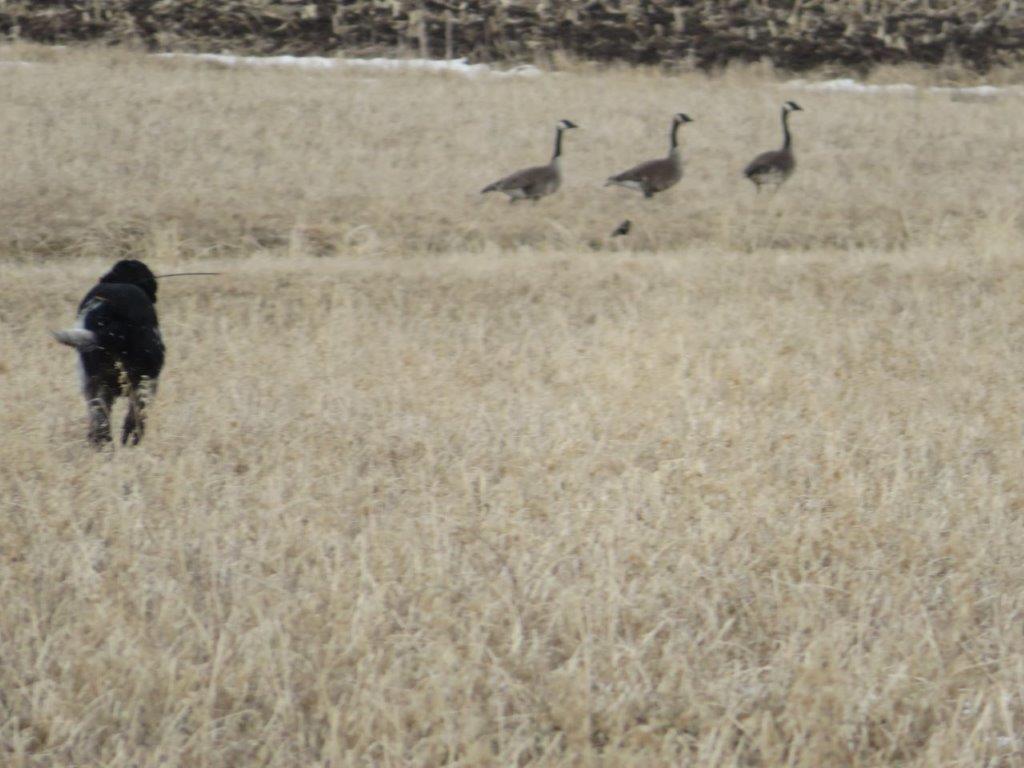 Territorial sandhill cranes seldom cause significant damage because their density is low (but to the farmer, anything is significant at todays prices). They damage field edges located near wetlands where they are nesting. --------------
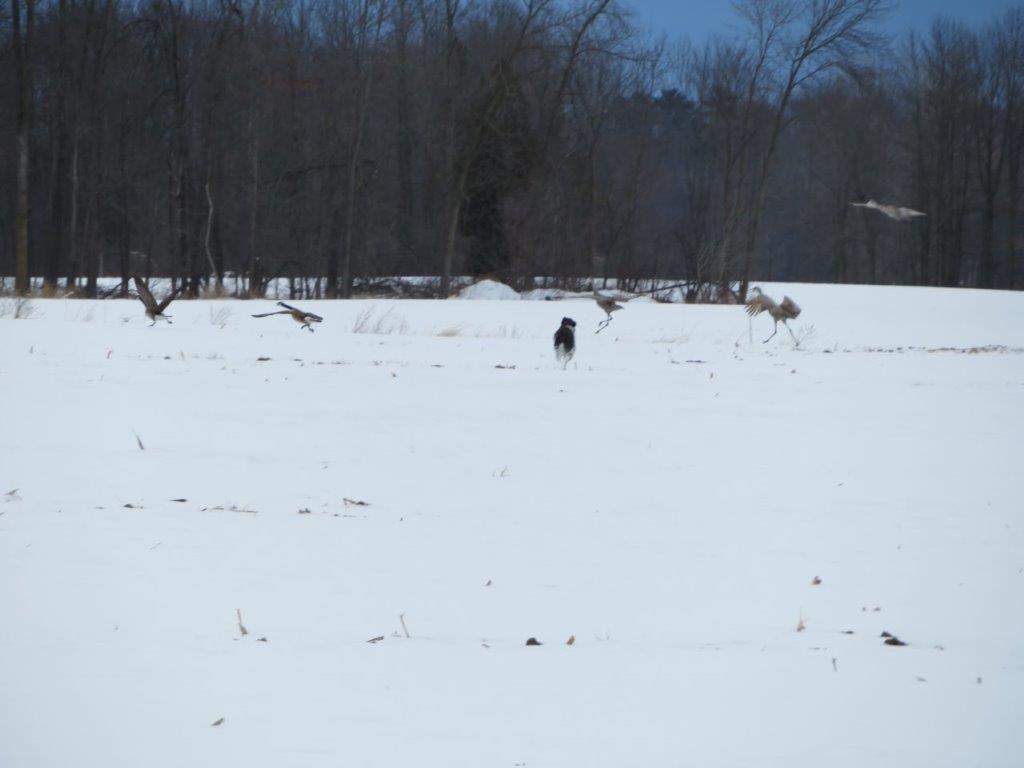 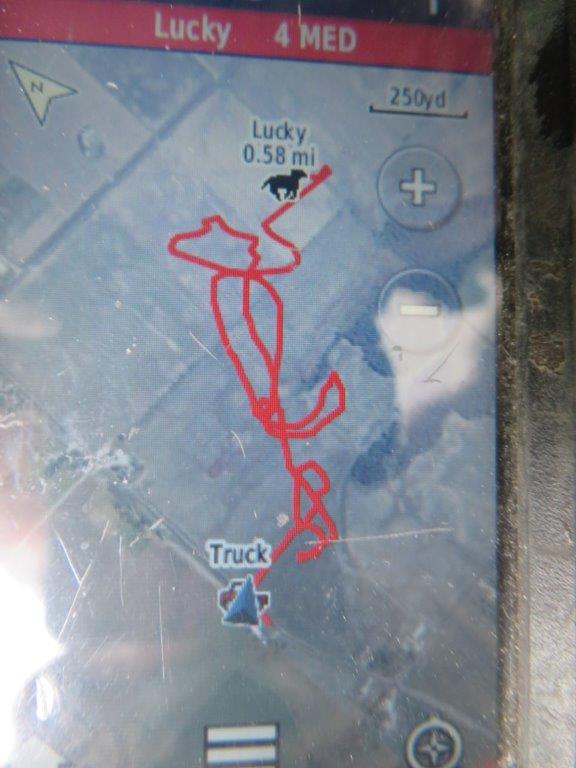 Sandhill
cranes
mate for life. They usually lay one or two eggs in heavy
cover and
incubate them for 29 to 32 days. One parent will always watch/defend
the chick (it can't fly for 2 or 3 months), so it can only feed as far
as it can walk. Alternating parents may feed on adjacent corn and bring
it back to the chick
(what we're trying to avoid - nesting near a corn field). Sandhill
cranes
mate for life. They usually lay one or two eggs in heavy
cover and
incubate them for 29 to 32 days. One parent will always watch/defend
the chick (it can't fly for 2 or 3 months), so it can only feed as far
as it can walk. Alternating parents may feed on adjacent corn and bring
it back to the chick
(what we're trying to avoid - nesting near a corn field).Crane chicks can't fly until 67 to 75 days. They remain highly elusive in heavy cover. Chicks are fed by the parents until 2 to 3 months old. Mates trade places every two hours during daylight hours. At night, the female incubates while the male stands guard. Crane chicks eat insects during the spring. Later in the summer, they feed on larger animals along with roots and tubers. --------------
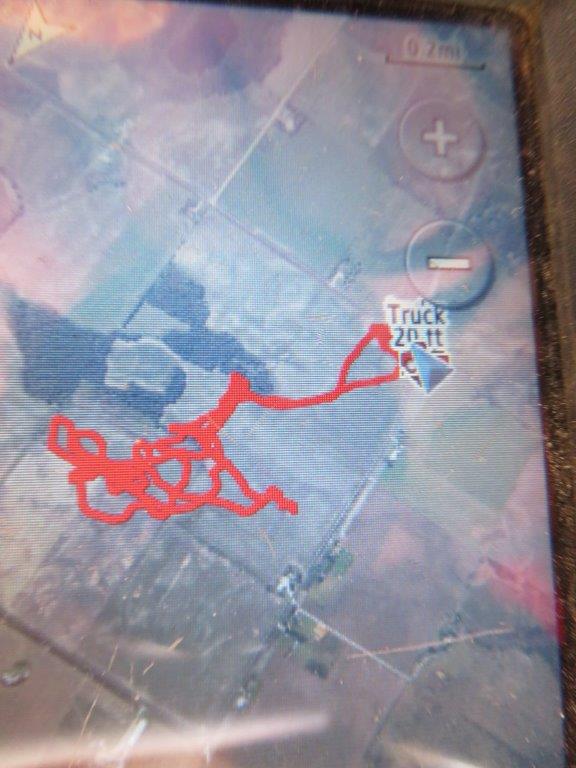 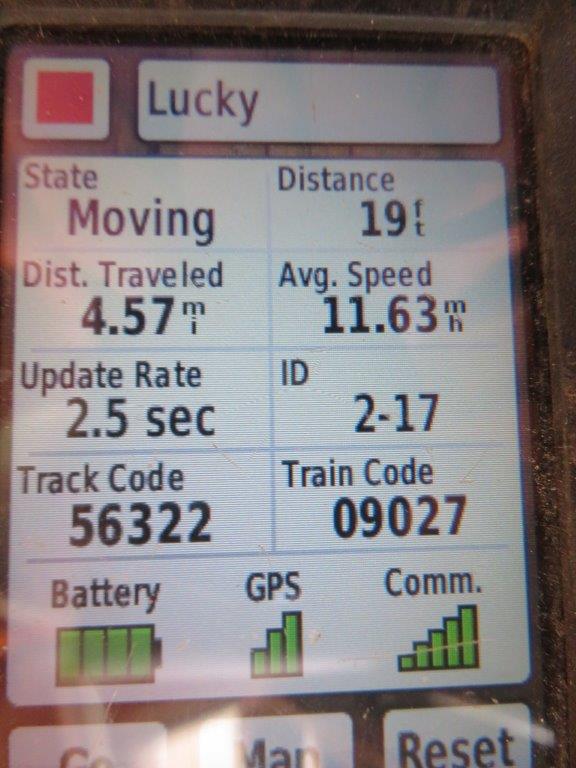 Hen turkeys are nesting and
spring
turkey season
is open,
so be considerate of the hens and the hunters. Don't let the dog run in
the woods, turkeys are mating and hens are trying to nest. Put
a training and tracking collar on the dog, to keep it out of the woods,
and for immediate recall if
necessary. Farmers know if anyone is
hunting their land, when and where. Look out for parked vehicles. If I
know they could be hunting, I go later in the morning or early in the
afternoon and avoid the weekends, since most people have jobs or school
and
can only hunt then. It helps to be retired. Hen turkeys are nesting and
spring
turkey season
is open,
so be considerate of the hens and the hunters. Don't let the dog run in
the woods, turkeys are mating and hens are trying to nest. Put
a training and tracking collar on the dog, to keep it out of the woods,
and for immediate recall if
necessary. Farmers know if anyone is
hunting their land, when and where. Look out for parked vehicles. If I
know they could be hunting, I go later in the morning or early in the
afternoon and avoid the weekends, since most people have jobs or school
and
can only hunt then. It helps to be retired.--------------
BE CAREFUL -
Sandhill
Cranes will aggressively defend the nest from all but the most
persistent predators. When humans, dogs, or other animals
approach a
nest having eggs or young chicks, the parents may perform a
diversionary display, moving away from the nest, with or without
wing-spreading, and assuming a posture associated with intense
aggressive threat. You and your dog will recognize the
danger and with any sense at all, will not approach any closer.--------------
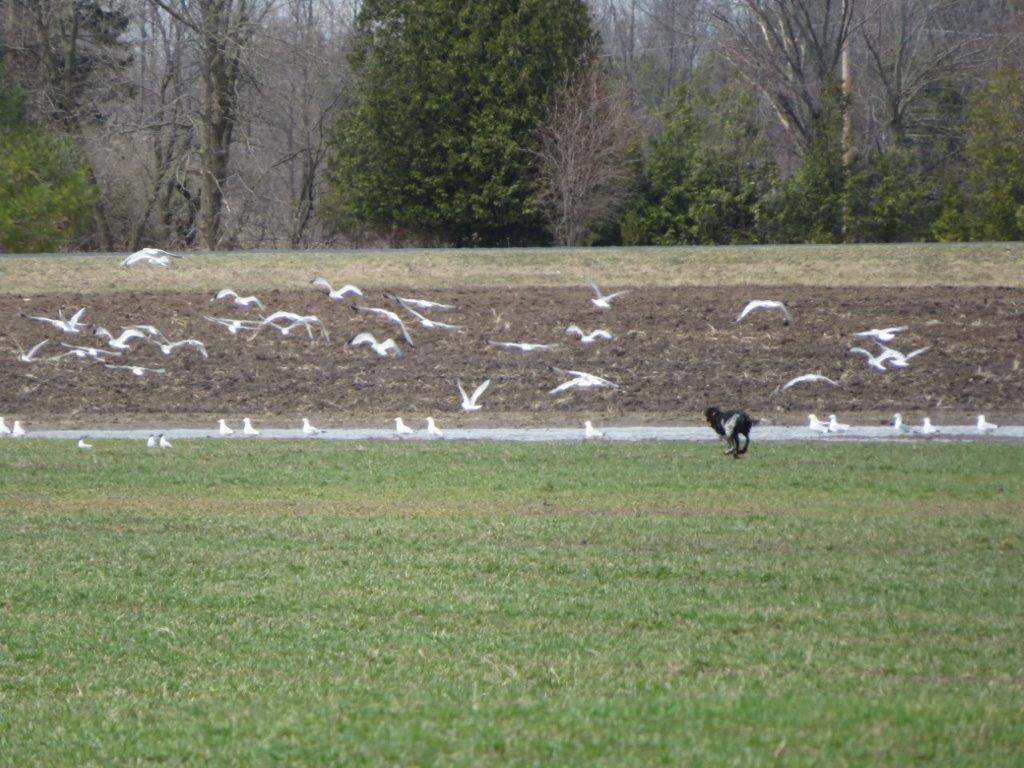 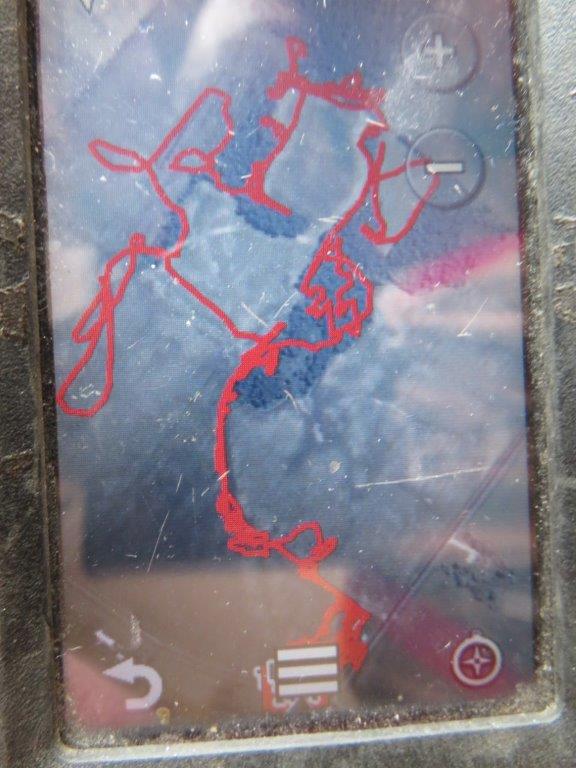 They'll
nest somewhere, the goal is to have them nest where the colt and
parents can't just walk out into the corn field to feed. They'll
nest somewhere, the goal is to have them nest where the colt and
parents can't just walk out into the corn field to feed.As long as only one parent at a time flies out to the corn field (not walks), it might be okay to scatter them during the 8 days the corn is vulnerable, without danger of being bill-stabbed. BE AWARE - It's very likely a dog can't smell a setting crane. Ground-nesting birds have a uropygial gland on their back, at the base of the tail, they preen the oil all over themselves to conceal their scent from predators, primarily during nesting. 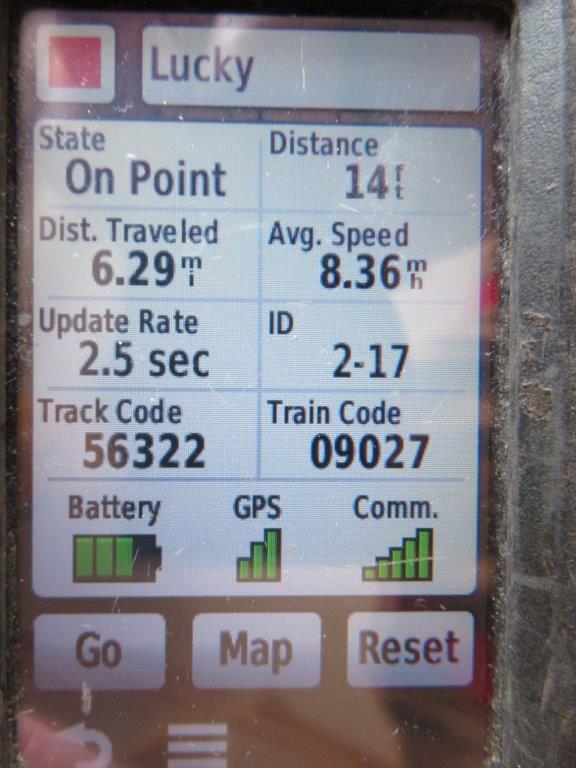 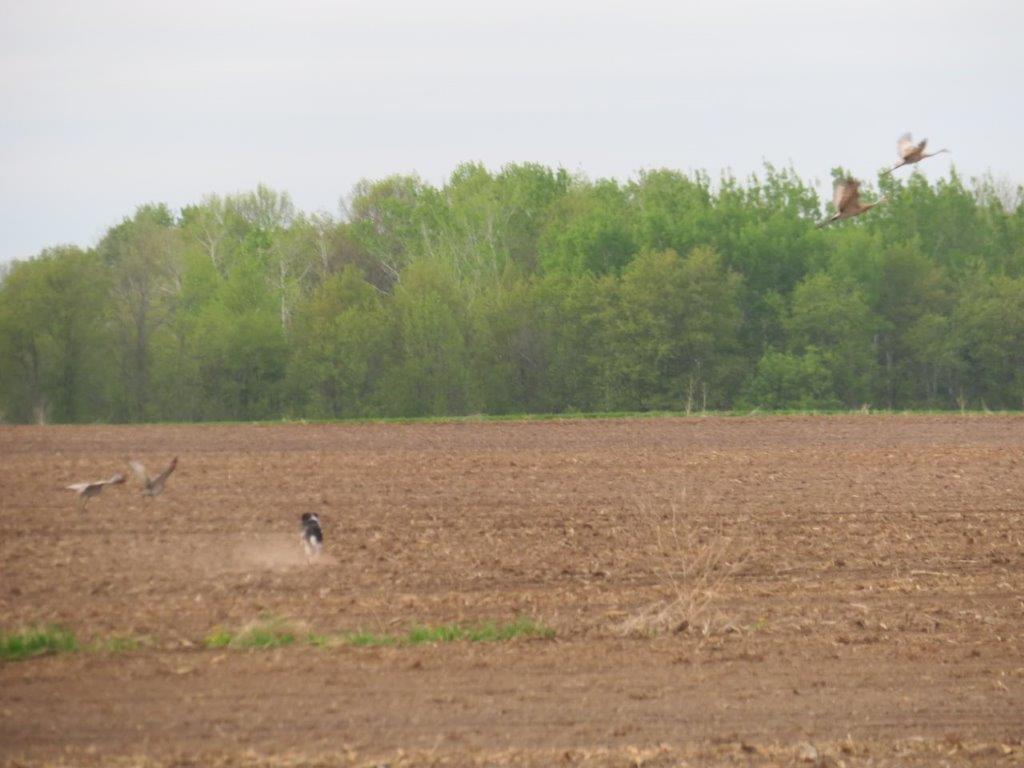 That's why
haybines run over
nesting turkeys, a ground-nesting bird's tactic is to avoid
predators
by staying quiet and camouflaged, even when the predator is within
feet. Cranes do the same, except their nest is in standing water. That's why
haybines run over
nesting turkeys, a ground-nesting bird's tactic is to avoid
predators
by staying quiet and camouflaged, even when the predator is within
feet. Cranes do the same, except their nest is in standing water. The dog may have to see or hear a setting bird, she may not be able to smell them, once they're nesting. --------------
Geese
are a lot easier to flush and much less dangerous for your dog. Geese
will
often come back around and try to land several times, until
they finally realize the dog isn't going to let them.--------------
 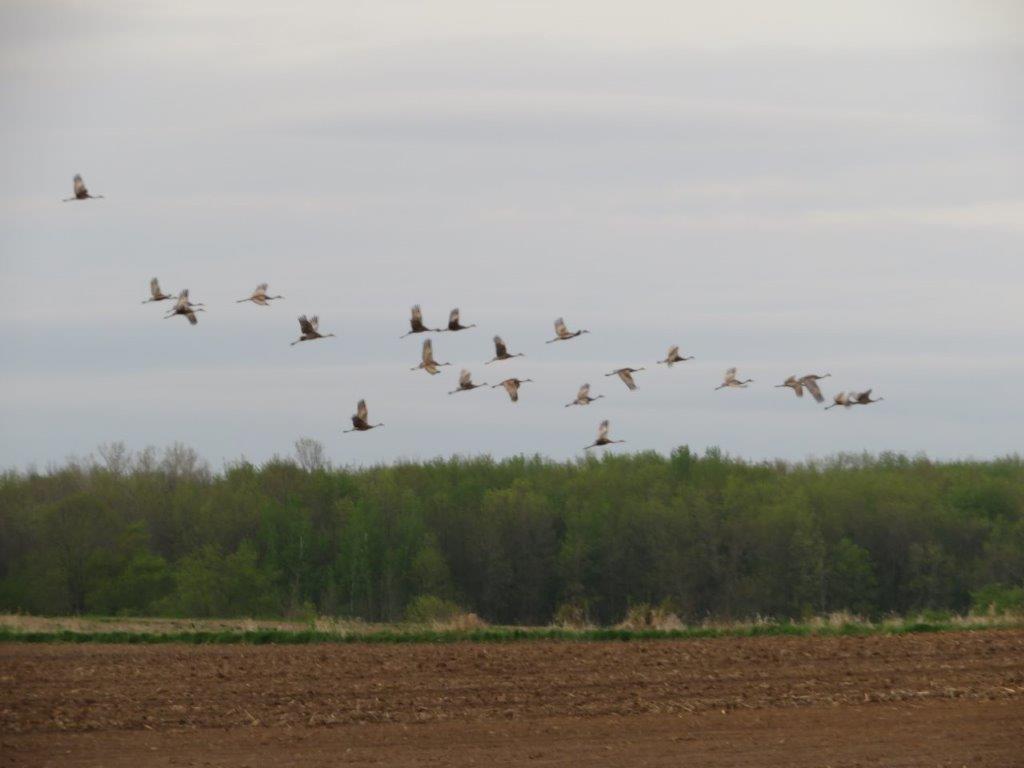 We
watched for cranes and geese once or
twice a day, for nearly three months. It
doesn't hurt to scatter the birds, we got our
exercise and the farmers got
peace of mind, knowing someone is watching the fields
for
them.
By the time the corn emerged, these particular cranes were so skittish
in these fields,if one did land, all we had
to do was stop at the edge of the field and they'd fly.
They're smart birds, but they're also conditioned.
Our efforts were
successful, no corn or beans were predated, no birds were harmed and
the dog is in top shape. Jon
Freis - Maribel, WI 6.21.18 We
watched for cranes and geese once or
twice a day, for nearly three months. It
doesn't hurt to scatter the birds, we got our
exercise and the farmers got
peace of mind, knowing someone is watching the fields
for
them.
By the time the corn emerged, these particular cranes were so skittish
in these fields,if one did land, all we had
to do was stop at the edge of the field and they'd fly.
They're smart birds, but they're also conditioned.
Our efforts were
successful, no corn or beans were predated, no birds were harmed and
the dog is in top shape. Jon
Freis - Maribel, WI 6.21.18--------------
More information
about Sandhill Cranes:
-Ecology and Damage Management- -Sandhill Cranes - Univ. of Nebraska Lincoln- -Individualistic and Social Behavior- -Comparative Reproductive Biology- --------------
If you're a non-hunter, interested in using your high-energy dog to scatter cranes, geese, or seagulls, join the club and get some exercise. Some dogs save elephants. Others save cougars, bears and wolves. Turkey dogs save cranes. -------------- CTDKC Suki
always does her best (below). Spring 2021.
|
| CAUTION: Here's a case where I saw one crane, off in
the
distance (at 50 power). Figured it was too dangerous to put a dog on
it. When I developed the film, I realized it was a colt, with an
adult laying down to it's left (look for it). It could've hurt
a
dog, defending it's colt. The corn kernel is totally disintegrated
anyway, they don't predate when the corn is that tall. Then
they're helping the farmer by eating bugs. June 16,
2022. |
| Questions
or problems with this page, call 920-776-1272 or email awthda@turkeydog.org Light is the task when many share the toil. |
| No part of this
webpage may be reproduced in any form by any means, electronic or
mechanical, including photocopy, recording, or any other information
storage or retrieval system without permission in writing from
the AWTHDA.
|
| Home | About Us
|
Books |
Breeds
| Classifieds
| FAQ
|
History
| Kit
Shaffer Legislation | Links | Scratchings | Spring | Stories | Tales | Shop in the Store Members are invited to send pictures of yourself and your dog, with a short story like these: Carson Quarles | Earl Sechrist | Frederick Payne 1 | Frederick Payne 2 | Gary Perlstein | Gratten Hepler | Jon Freis 1 | Jon Freis 2 | Larry Case | Marlin Watkins 1 | Marlin Watkins 2 | Mike Joyner | Mike Morrell | Parker Whedon | Randy Carter | Ron Meek 1 | Ron Meek 2 | Tom McMurray | Tommy Barham 1 | Tommy Barham 2 Members Only: Hall of Fame | Members | Museum | Studies | and the States KY | NC | NY | OH | ON | PA | TN | VA | WI | WV © 2018 - 2024 American Wild Turkey Hunting Dog Association All Rights Reserved Permission to copy without written authorization is expressly denied. |
